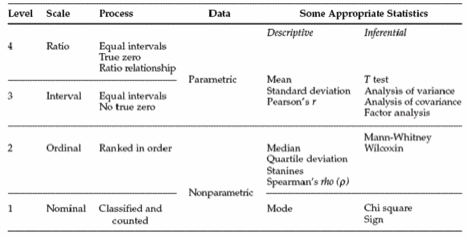Difference between revisions of "Inferential Statistics Definition"
(Created page with "'''Inferential statistics''' is defined as the branch of statistics that is used to make inferences about the characteristics of a populations based on sample data. • The...") |
|||
| Line 19: | Line 19: | ||
[[Image:Chosingstat.gif]] | [[Image:Chosingstat.gif]] | ||
| + | |||
| + | Inferential statistics is data based upon a sample of a specified population. The objective of inferential statistics is to gain insights about a population. For example, if the researcher wanted to know if more customers would go to the Shelton Starbuck's on a double reward points day (usually Wednesday or Thursday) in contrast to a non-double rewards days between the hours of 6 A.M. - 8 A.M. The researcher would tally the number of patrons on the observed days and a T-test to record and analyze the data. From this, the researcher will learn if double reward days increases business. | ||
| + | |||
| + | "contributed by Héctor Huertas" | ||
Revision as of 15:28, 21 April 2020
Inferential statistics is defined as the branch of statistics that is used to make inferences about the characteristics of a populations based on sample data.
• The goal is to go beyond the data at hand and make inferences about population parameters.
• In order to use inferential statistics, it is assumed that either random selection or random assignment was carried out (i.e., some form of randomization must is assumed).
contributed by Karen Burke, EdD
Parametric versus non-parametric tests
Many statistical tests are based upon the assumption that the data are sampled from a normal distribution. These tests are referred to as parametric tests. Parametric tests are generally used on interval or ratio data.
Tests that do not make assumptions about the population distribution are referred to as nonparametric tests. Non-parametric tests are used when data ranks the outcome variable from low to high (ordinal level data) or if data groups are nominal.
contributed by Frank LaBanca, EdD
Inferential statistics is data based upon a sample of a specified population. The objective of inferential statistics is to gain insights about a population. For example, if the researcher wanted to know if more customers would go to the Shelton Starbuck's on a double reward points day (usually Wednesday or Thursday) in contrast to a non-double rewards days between the hours of 6 A.M. - 8 A.M. The researcher would tally the number of patrons on the observed days and a T-test to record and analyze the data. From this, the researcher will learn if double reward days increases business.
"contributed by Héctor Huertas"
